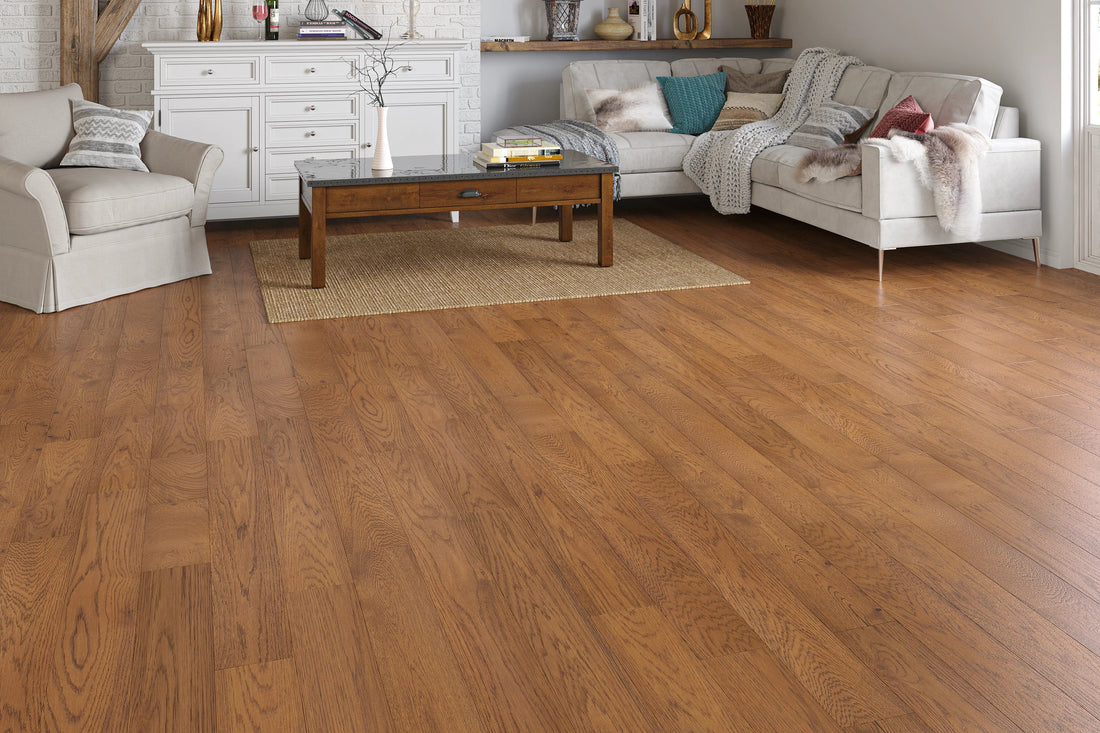Flooring has been part of human history for thousands of years. These days, we don’t think much about what’s under our feet, but the journey from compacted dirt to the polished wood floors found in homes today is quite a story. Let’s walk through how flooring has changed over time, from simple surfaces to stylish, long-lasting materials.
Who Came Up with the First Floor?
Long before houses had floorboards or tiles, people simply walked on packed earth. The earliest known purpose-built floors appeared about 9,000 years ago during the Neolithic period. Early civilisations in Mesopotamia started using hardened clay and stone slabs to create durable walking surfaces.
The Egyptians took things further by adding decorative stone floors to their temples and palaces. Later, the Romans designed intricate mosaic floors, proving that flooring could be both functional and beautiful.
Who Invented Flooring?
There isn’t a single person credited with inventing flooring. Different cultures developed their own versions over time. The first wooden floors started showing up in medieval Europe, where thick, uneven planks were laid over wooden beams. These floors were practical but required constant upkeep.
During the Renaissance, flooring became more refined. French parquetry, a style where small pieces of wood were arranged in decorative patterns, became popular in the 16th century. By the 19th century, improved sawmill technology made uniform wooden planks more common, bringing wood flooring to more homes.
How Long Does Flooring Last?
The lifespan of flooring depends on the material and how well it’s looked after. Solid wood floors, especially oak and walnut, can last well over 100 years with proper care. Many historic homes still have their original wooden floors, thanks to refinishing and maintenance. Learn more about engineered wood floor care to keep your floors looking their best.
Other flooring types vary. Stone and ceramic tiles can last for centuries, while vinyl or laminate may need replacing after 10–30 years, depending on usage. Keeping floors in good condition comes down to regular cleaning, protecting them from excessive moisture, and choosing high-quality materials.
How Did Floor Tiles Come About?
Tiles have been used for over 4,000 years. The Egyptians created some of the first ceramic tiles to decorate homes and temples. The Greeks and Romans advanced the craft, using terracotta and marble mosaics to design intricate floors.
During the medieval period, encaustic tiles—made by layering different colours of clay—became popular in European churches and castles. By the 19th century, industrial production made tiles more accessible, and modern techniques have expanded the range of styles available today.
Flooring Today: Blending Tradition with Style
Flooring has come a long way from simple dirt paths. These days, it’s not just about durability but also about adding character to a space. At UK Flooring Depot, we honour the craftsmanship of traditional wood flooring while offering a range of modern options that suit different styles and needs. Whether you prefer classic oak, rich walnut, or something sleek and contemporary, there’s a floor that fits your home perfectly.
If you have pets, you might want to explore the best flooring for pets. Looking for sustainable options? Check out our eco-friendly flooring choices.
From ancient stone surfaces to elegant hardwood, flooring has shaped the way we live for centuries. And with today’s innovations, the choices are better than ever.
Find your perfect floor at UK Flooring Depot—where history meets quality.






